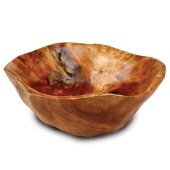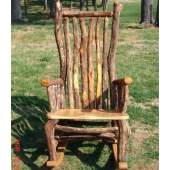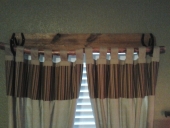This is a badge bit (BB) that is part of the
PEP curriculum. Completing this BB is part of getting the iron badge in
round wood woodworking.
For this BB, you will carve 2 large spoons for cooking/serving and 3 small spoons for eating!
 (source: Pinterest)
(source: Pinterest)
Minimum requirements:
- must be oiled with raw linseed oil, tung oil or some other natural oil to protect the spoons
- must be made with roundwood (no dimensional lumber)
- must be well-made spoons that you'd pay good money for at an art/craft fair
To get certified for this BB provide photos or video (less than 2 minutes) showing the following:
- Your chunks of wood that you are starting with
- Progress about halfway through, with the hand tools you have decided to use for this
- show what you are oiling them with
- oiling the spoons
- The final products








